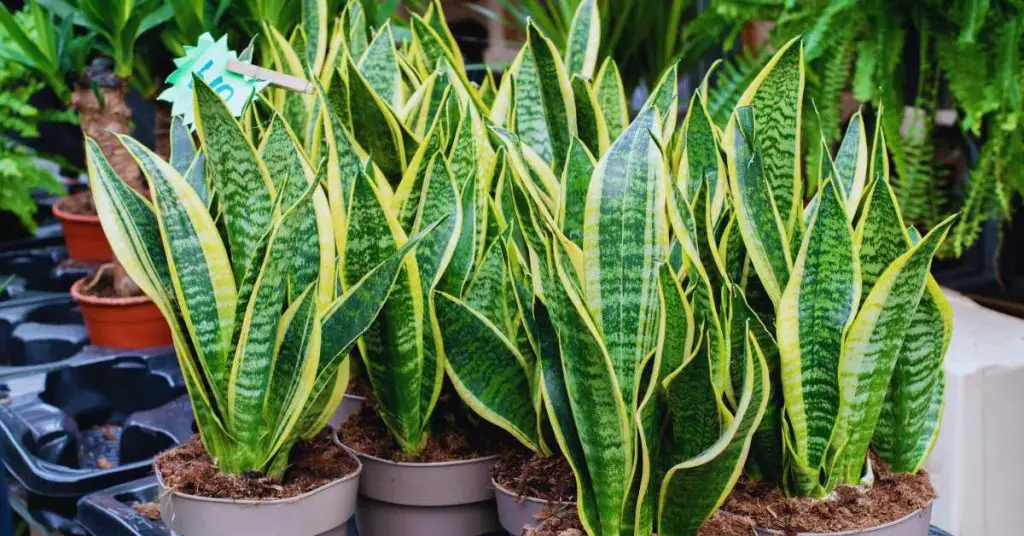Snake plants, also known as Sansevieria, are popular houseplants known for their air-purifying qualities and low maintenance requirements. Propagating snake plants is a great way to expand your collection or share plants with friends.
There are two main methods for propagating snake plants: leaf cuttings and division. Leaf cuttings involve removing a healthy leaf from the mother plant and allowing it to develop roots, while division involves separating the mother plant into smaller sections. Both methods are relatively simple and can be done with basic gardening tools.
In this guide, we’ll walk you through each step of the propagation process, including selecting the right plant, preparing the cuttings or divisions, and caring for them as they grow. Whether you’re a beginner or experienced gardener, propagating snake plants is a rewarding experience that allows you to witness new growth firsthand. Let’s get started!
Why Would You Propagate a Snake Plant?
There are several reasons why you might want to propagate a snake plant. One of the main reasons is to expand your collection of plants.
Propagating snake plants allows you to create new plants from existing ones, which is especially useful if you want to fill a larger space with greenery or if you simply enjoy the process of plant propagation.
Another reason to propagate snake plants is to share them with friends and family. Snake plants make great gifts, and propagating your own plants allows you to share the joy of gardening with others.
Additionally, propagating snake plants can help rejuvenate older plants. By propagating and replanting younger sections of the plant, you can help promote new growth and ensure your snake plant remains healthy and vibrant.

How Do You Know It’s Time to Propagate a Snake Plant?
There are a few signs that indicate it might be time to propagate your snake plant. One common indicator is when the plant becomes too large or overcrowded in its current pot.
If you notice that your snake plant is outgrowing its pot or if the roots are becoming tightly packed, it may be time to divide the plant and propagate new sections.
Another sign is if the plant is producing offsets or pups. These are small, baby plants that grow off the main plant and can be easily separated and propagated on their own.
If you notice that your snake plant is becoming leggy or is not producing new growth, propagating a new plant from cuttings or divisions can help rejuvenate the plant and encourage healthier growth.
How To Propagate Snake Plant
Propagation by Leaf Cuttings
1. Selecting a Healthy Leaf: Choose a mature, healthy leaf from the mother plant. Look for a leaf that is firm and free from any signs of damage or disease. A leaf with vibrant green coloration is ideal.
2. Cutting the Leaf: Use a clean, sharp knife to cut the leaf at a 45-degree angle. Make the cut about 2-3 inches from the base of the leaf. This angle will help the cutting absorb water and nutrients more easily.
3. Drying the Cutting: Place the cutting in a warm, dry location out of direct sunlight. Allow the cutting to dry for a few days until a callus forms over the cut end. This callus will help prevent rot when the cutting is planted.
4. Planting the Cutting: Fill a small pot with well-draining potting mix. Make a small hole in the center of the potting mix and insert the cut end of the leaf cutting into the hole. Gently press the soil around the cutting to secure it in place.
5. Caring for the Cutting: Place the pot in a warm, bright location, but avoid placing it in direct sunlight. Water the cutting sparingly, keeping the soil moist but not waterlogged. After a few weeks, you should start to see new growth emerging from the base of the cutting.
Propagation by leaf cuttings is a simple and effective way to propagate snake plants. It’s a great method for beginners and allows you to create new plants from existing ones with minimal effort.
Propagation by Division
1. Preparing the Plant: Remove the snake plant from its pot and inspect the rhizome, which is a thick, underground stem, for natural separations. The rhizome should have multiple sections or “crowns” that can be separated into individual plants.
2. Separating the Plant: Gently separate the rhizome into sections, ensuring that each section has roots attached. Use a clean, sharp knife to cut through the rhizome if necessary, making sure to leave each section with an adequate portion of roots.
3. Planting the Divisions: Fill small pots with well-draining potting mix. Plant each division in its own pot, making sure the roots are covered with soil. Press the soil gently around the base of the plant to secure it in place.
4. Caring for the Divisions: Place the pots in a bright location, but avoid direct sunlight, as this can cause stress to the newly divided plants. Water the divisions sparingly, allowing the soil to dry out slightly between waterings. After a few weeks, you should start to see new growth emerging from the divisions, indicating that they have successfully rooted and established themselves.
Propagation by division is a quick and easy way to propagate snake plants. It’s best done when the plant is actively growing, typically in the spring or early summer. By dividing your snake plant, you can create new plants that are genetically identical to the parent plant, ensuring that they will have the same characteristics and growth habits.
How Long Does It Take for Snake Plant Cuttings to Root?
Snake plant cuttings typically take 2-6 weeks to root, depending on environmental conditions. Factors such as temperature, humidity, and light levels can affect rooting time. Warmer, more humid conditions will generally encourage faster rooting.
It’s important to be patient during this process and avoid disturbing the cuttings while they are rooting. Once roots have formed, you can gently tug on the cutting to check for resistance, indicating that it has rooted successfully.

Can Snake Plants Be Propagated in Water?
While snake plant cuttings can be propagated in water, it is not the preferred method. Propagating in water can increase the risk of rot, especially if the cutting is left in water for an extended period.
It is best to propagate snake plants in a well-draining potting mix to prevent overwatering and promote healthy root development.
If you choose to propagate in water, be sure to change the water regularly and monitor the cutting for any signs of rot.
Do Snake Plant Cuttings Need Sunlight?
Snake plant cuttings do not require direct sunlight while rooting. Direct sunlight can actually be harmful to the cutting, causing it to dry out or become stressed. Instead, place the cuttings in a location with bright, indirect light.
A north-facing window or a few feet away from a south or west-facing window can provide the ideal light conditions for rooting snake plant cuttings.
How Often Should I Water Newly Propagated Snake Plant Cuttings?
Water newly propagated snake plant cuttings sparingly, allowing the soil to dry out slightly between waterings. Overwatering can lead to rot, so it’s important to let the soil dry out at least partially before watering again.
The frequency of watering will depend on factors such as temperature, humidity, and the size of the pot. Monitor the soil moisture closely and adjust your watering schedule as needed to keep the soil lightly moist but not waterlogged.
Frequently Asked Questions
Can I Propagate Snake Plant in Winter?
Yes, you can propagate snake plant in winter, but the process may take longer due to the plant’s slower growth rate during this season.
It’s important to provide the cutting or division with the right environmental conditions, including adequate warmth and light, to encourage rooting and growth.
Keep in mind that the plant may take longer to root and establish itself during the winter months, so patience is key.
What Is the Best Time of Year to Propagate Snake Plant?
The best time of year to propagate snake plant is during the spring or early summer when the plant is actively growing. This is when the plant is most likely to produce healthy, vigorous growth, making it easier for cuttings or divisions to root and establish themselves.
Propagating during this time also allows the new plants to take advantage of the warmer temperatures and increased sunlight, which can help promote faster growth and root development.
How Do I Know If My Snake Plant Cutting Is Rooting?
You can tell if your snake plant cutting is rooting by gently tugging on it after a few weeks. If you feel resistance, it’s likely that roots have formed and the cutting has begun to establish itself.
You can also check for signs of new growth, such as tiny shoots or leaves emerging from the base of the cutting. Additionally, you may see small white or brown bumps along the cutting, which are the beginnings of new roots.
Should I Use Rooting Hormone When Propagating Snake Plant?
While rooting hormone is not necessary for propagating snake plant, it can help speed up the rooting process and increase the chances of success, especially in more challenging conditions.
Rooting hormone can be particularly useful when propagating from leaf cuttings, as it can encourage the development of roots along the cut edge of the leaf.
However, snake plants are relatively easy to propagate without rooting hormone, so it is not essential for success.
Can I Propagate Snake Plant in a Glass of Water?
Yes, you can propagate snake plant in a glass of water, but it’s not the preferred method as it can increase the risk of rot. Snake plants are sensitive to overwatering, and propagating in water can lead to rot if the cutting is not transferred to soil in a timely manner.
If you choose to propagate in water, be sure to change the water regularly and monitor the cutting for any signs of rot. Once roots have formed, transfer the cutting to a pot with well-draining soil to continue growing.
How Big Should Snake Plant Cuttings Be for Propagation?
Snake plant cuttings should ideally be 2-3 inches long for propagation. It’s important to use a clean, sharp knife to make a clean cut, as this will help promote healthy root development. Avoid using cuttings that are too large or too small, as they may have a lower chance of success.
The cutting should have at least one leaf and a portion of the stem, as this will provide the necessary nutrients for the cutting to root and establish itself.
Can I Propagate Snake Plant in the Same Pot?
Yes, you can propagate snake plant in the same pot as the parent plant, but it’s important to ensure that the new plant has enough space and resources to grow. If the pot is large enough and has sufficient soil, you can plant the new plant directly next to the parent plant.
However, if the pot is small or crowded, it may be better to transplant the new plant into its own pot to prevent competition for resources. Monitor both plants closely and adjust their care as needed to promote healthy growth.
Conclusion
Propagating snake plants can be a rewarding and enjoyable experience for gardeners of all skill levels. Whether you choose to propagate through leaf cuttings or division, the process is relatively simple and can result in new plants that are identical to the parent plant. By following the steps outlined in this guide, you can successfully propagate snake plants and expand your indoor garden.
Remember to select healthy plant material, provide the right environmental conditions for rooting, and monitor the new plants closely as they grow. With proper care and attention, your propagated snake plants will thrive and bring beauty to your home for years to come.





